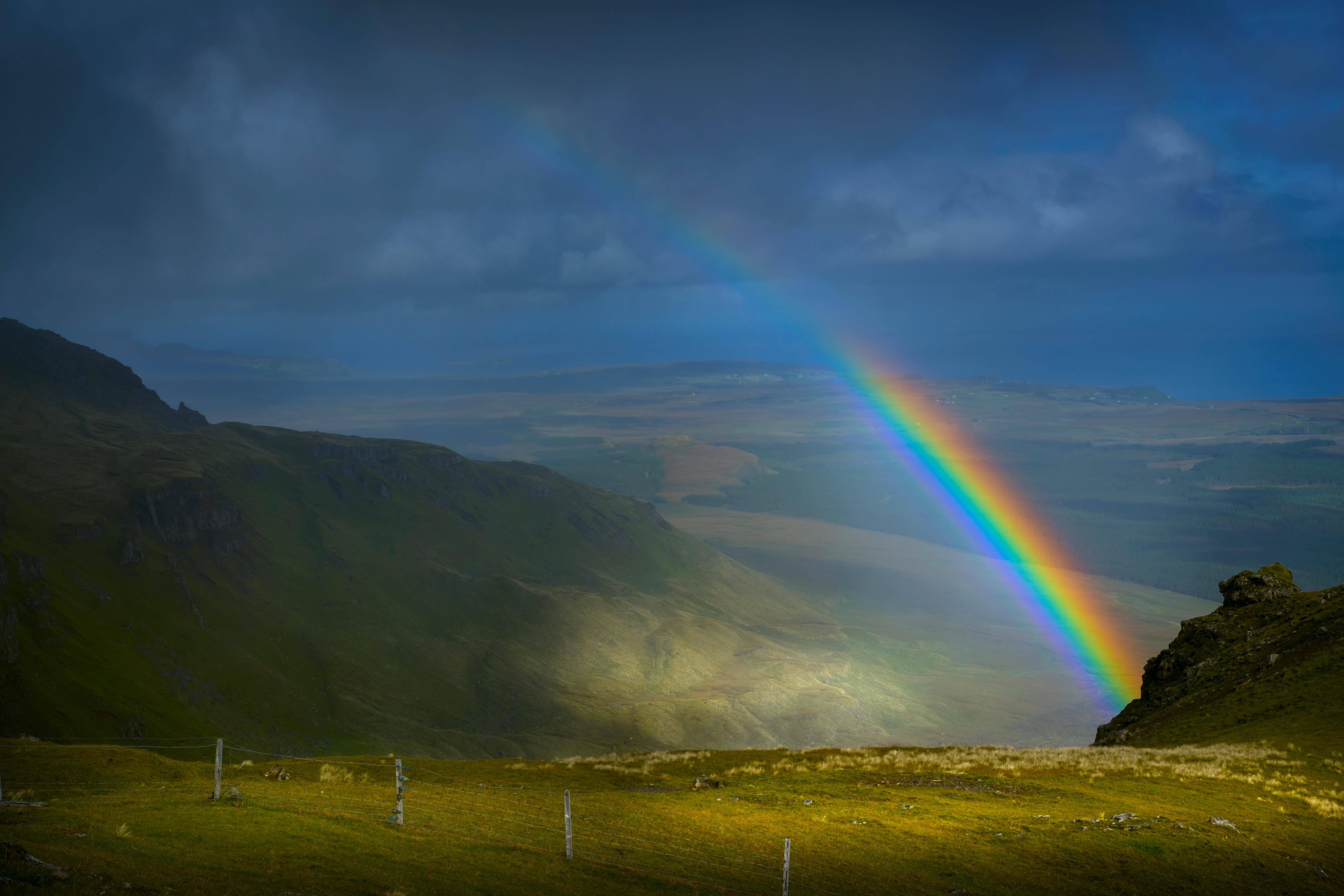The fascinating science of rainbows
Sure, they're pretty. But they're also powerful scientific tools!


There is a beautiful natural phenomenon that can occur after a rainfall, when sunlight faces off against a swarm of water droplets hanging in the atmosphere. If you are lucky enough to be standing in the right place at the right time, you'll see a seven-colored stream of light painting the sky above.
Rainbows have fascinated humans for centuries. In the Book of Genesis, a rainbow appears after the worldwide flood to show God's mercy. In Germanic mythology, there's a rainbow bridge connecting Earth to the realm of the gods. We still spread the tall tale that, at the end of every rainbow, sits a glimmering pot of gold. And who can forget the rainbow's starring role in The Wizard of Oz?
Despite our whimsical love of rainbows, we haven't spent much time actually studying them. But that has started to change, as an increasing number of scientists are taking an interest in these natural splendors and discovering that there is more to them than meets the untrained eye.
The Week
Escape your echo chamber. Get the facts behind the news, plus analysis from multiple perspectives.

Sign up for The Week's Free Newsletters
From our morning news briefing to a weekly Good News Newsletter, get the best of The Week delivered directly to your inbox.
From our morning news briefing to a weekly Good News Newsletter, get the best of The Week delivered directly to your inbox.
First, a quick primer: Rainbows appear when sunlight gets scattered by water droplets. The light rays pass into the drops and then get reflected back out, causing the sunlight's wavelengths to split up into an array of colors.
This complex reaction can provide key information for scientists, according to a recently published article in the European Journal of Physics by Alexander Haußmann, of the Technical University of Dresden, Germany.
What kinds of information? First of all, the size of a rainbow can tell scientists if there are chemicals in the atmosphere. Because chemicals — like acid rain, for example — change the makeup of the water droplets, the sunlight reacts differently as it passes through them and shrinks the rainbow's radius. You can see this in action by looking at this photo of a rainbow at sea. The segment of the rainbow on the left has a slightly smaller radius because it is made of sea water spray, which contains salt, and therefore scatters light differently than rainwater.
"If our analysis methods are precise enough, we can turn rainbows into optical remote sensing tools to study the physics of rain," Haußmann says.
A free daily email with the biggest news stories of the day – and the best features from TheWeek.com
Researchers can also use the colors of rainbows to measure air pollution, says Joe Shaw, director of Montana State University's Optical Technology Center. "If you have pollution particles in the air, they can change the scattering so that you get less vivid colors," he says.
In most cases, these differences are so subtle that you or I wouldn't be able to notice them at a glance, but with careful calculation and more research, scientists could use rainbow shape and color to compare day-to-day air pollution.
What else can rainbows tell scientists? These lovely bands of color could help us develop something very practical: stronger concrete and bulletproof materials.
How? Well, the wavelengths created when light hits water are actually very similar to "mechanical waves" — the waves that result from energy being transferred through matter. When a rock is tossed into a pool, the ripples in the water are mechanical waves. Or, think of wiggling a slinky — the wave that travels along the coils all the way to the end of the toy are mechanical waves. Energy is traveling through an object and creating a pattern as it does so.
Still with me? Okay, good.
Mechanical waves are also created when a bullet (or some other force) strikes concrete (or some other object). Because optical and mechanical waves behave very similarly, mathematicians can study the waves in rainbows to help understand how much pressure concrete and other materials can withstand, and then build something stronger.
Haußmann is hoping to inspire more scientific research into rainbows. Now is an especially good time to study them given how technically adept digital cameras have become. These cameras have made it much easier for scientists to capture tiny details in rainbows and then use them for research. In recent years, photographers have successfully snapped photos of super rare rainbows, like the tertiary (triple rainbow) and quaternary (quadruple rainbow), explains Raymond Lee of the U.S. Naval Academy. "Imagine seeing the first-ever photographs of a rare natural phenomenon that had been observed only about four times in the previous 250 years," he says. "That's exciting stuff."
Hallie Golden is a freelance journalist in Salt Lake City. Her articles have been published in such places as The New York Times, The Economist, and The Atlantic. She previously worked as a reporter for The Associated Press.
-
 Rob Jetten: the centrist millennial set to be the Netherlands’ next prime minister
Rob Jetten: the centrist millennial set to be the Netherlands’ next prime ministerIn the Spotlight Jetten will also be the country’s first gay leader
-
 Codeword: November 4, 2025
Codeword: November 4, 2025The Week's daily codeword puzzle
-
 JD Vance wades into choppy religious waters about wife Usha
JD Vance wades into choppy religious waters about wife UshaTHE EXPLAINER By emphasizing his hope that the Second Lady convert to Christianity, the Vice President of the United States is inviting controversy from across the religious spectrum
